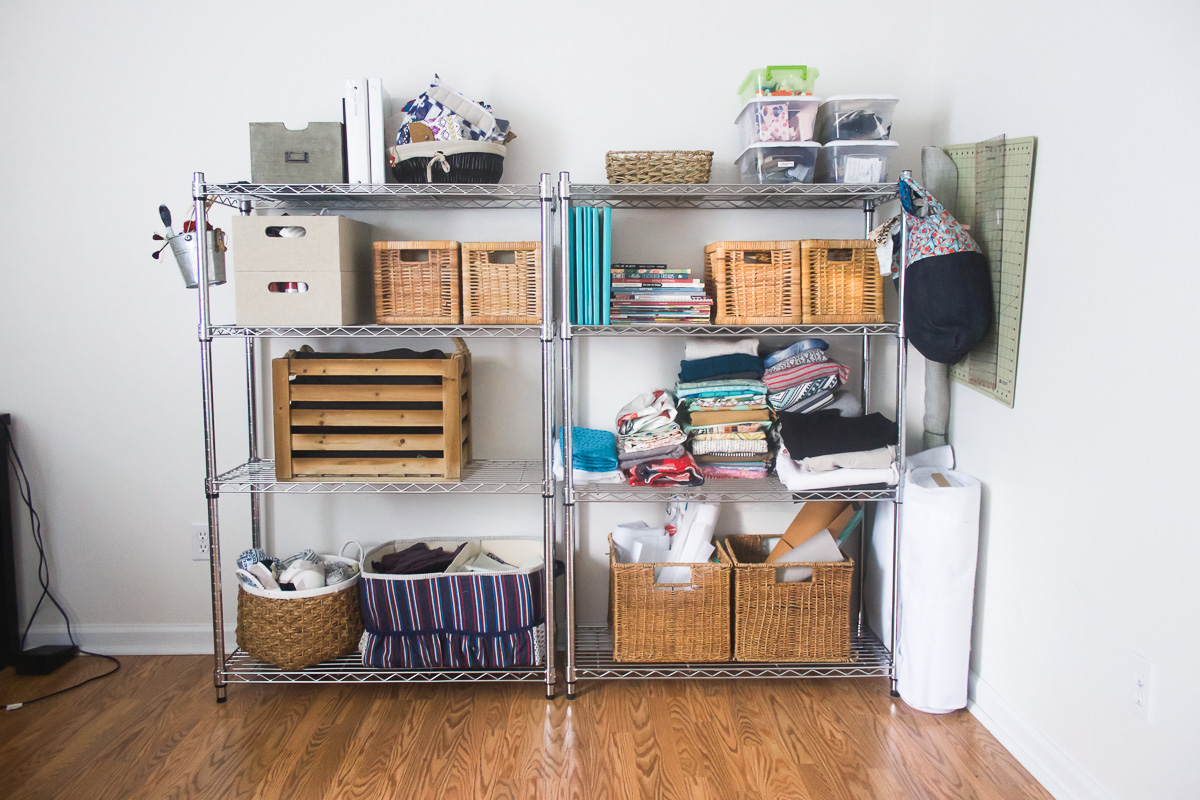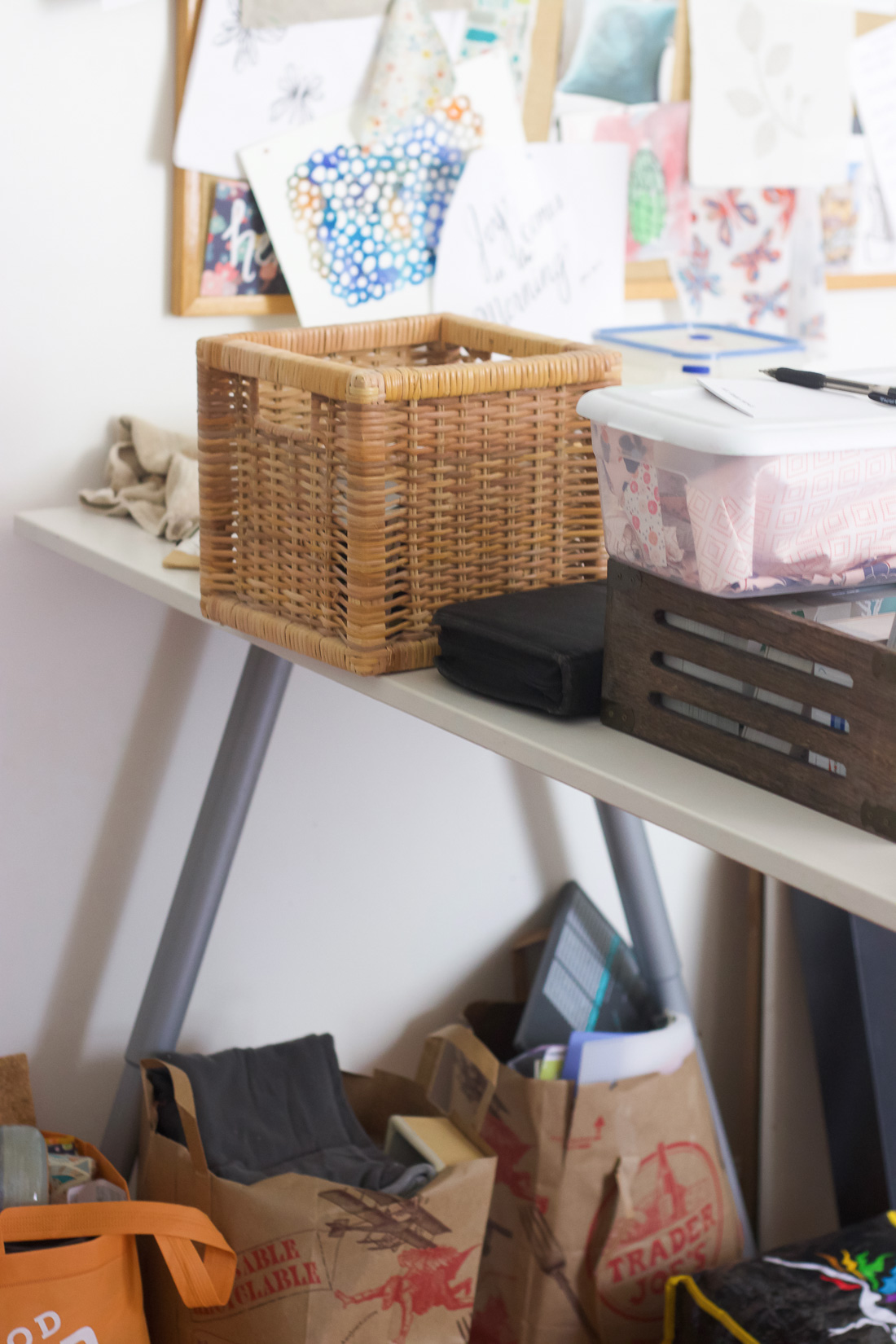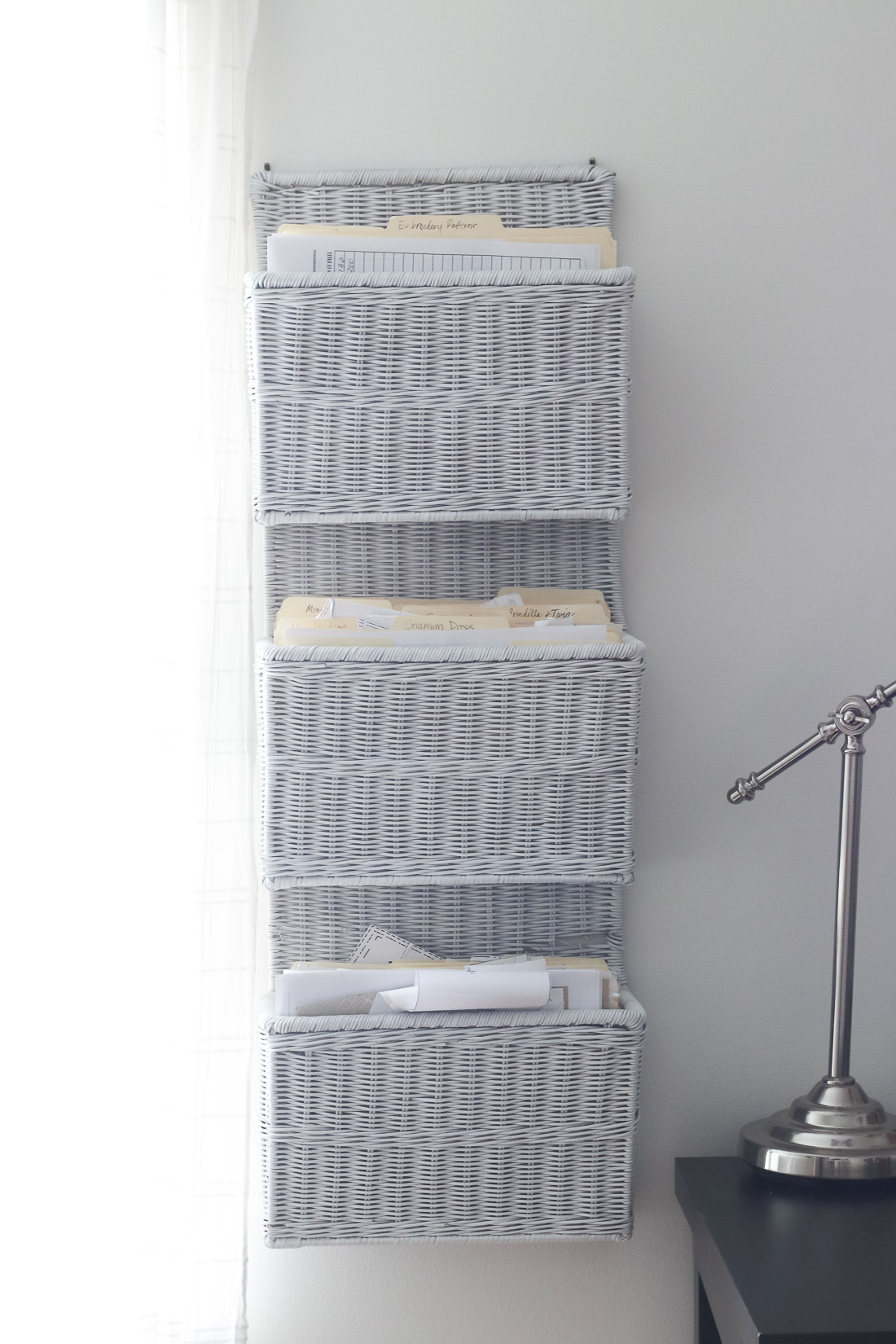One of the things that
A clean space always sparks creativity for me. If you’re in a creative rut, decluttering your sewing and craft space might be just what you need to get back to making things!

For the first 12 years of my marriage, my husband was in the Navy. The frequent moves helped me keep my supplies to a minimum and forced me to declutter at least every 2 years. We’ve been in the same city for 6 years now, and in the same home for about 4 years. In addition, I’m blessed with a separate sewing room in the house which means I can shut the door and ignore the mess. Hah! I’ve done some small cleaning a
You likely have way more crafting supplies than you can actually use (like me) and plenty of small containers to store your things. So, just jump in and get started!
You can use my decluttering plan to help get your sewing space and supplies organized again. Here’s the process for how to declutter your sewing space & supplies. (This post contains affiliate links, which means I make a small commission when you purchase through my links at no cost to you.)
Gather some supplies.
I like to have at least a
You’ll also need a broom and dustpan, a vacuum, and some dusting rags to clean as you go.
Pick up all of the obvious trash.
I always have a large accumulation of fabric trimmings, thread, and paper bits on the floor and cutting table. I like to get the obvious trash out of the way so I can sort things on the floor and table. I keep a small broom and dustpan in my sewing area for this purpose as well.

Evaluate your space.
Do you have more furniture than you need? Do you need to rearrange the space? Remove large items and rearrange if you need to.
Make a pile of unfinished projects.
I like to keep my unfinished projects in a basket. I often avoid my pile of mending, thinking it will take forever. Usually, once I get to it, it only takes 20 minutes to get through my pile. Store it in one spot and make a plan to tackle it once a month.
Sort & organize sewing patterns.
First, sort through your sewing patterns and decide what to keep. I find it’s better to ask myself “Am I going to make this in the next year?” Be honest with yourself! If the answer is no, then toss it. You’ll end up keeping way too many if you keep everything you might use someday. You can always print it again if you change your mind later.
- If you don’t already have an organizational system for your printed patterns, decide on a method and get them organized.
- I keep mine folded in manila folders and filed in a wall basket. I know other people use gallon zipper bags and others keep their patterns rolled. Whatever you want to do is great, but keep it consistent.

Sort & organize your fabric.
Gather
- Is the fabric dated? Don’t save fabric with a 90’s motif. You won’t use it.
- Is it good quality? Linen, cotton, and rayon fabrics will last. Get rid of cheap synthetics.
- Do you still love the color or pattern? If you don’t sell it or donate to someone that does.
- Is there enough left to make a garment? Don’t save scraps if you won’t use them.
- For interfacings, is the glue still adhesive? Get rid of scraps. You likely won’t use them “someday”.
Keep large pieces folded on a shelf. You can use your cutting ruler to fold your pieces the same size. That way they stack nicely on the shelf.

Sort & organize notions.
I found a ton of zippers I didn’t know I had ordered while I was cleaning! ( I might love Zipit a little too much!) Kids are always digging through trims and elastics and
- Gather all your zippers, needles, buttons, pins, elastics, trims, and threads and put them with like supplies. This will keep you from ordering more than you need!
- Just like with the other supplies, if you aren’t going to use it soon, pass it on to someone that will.
- Use jars and craft containers for organizing small supplies.
- You can keep zippers, elastics, and trims in plastic shoebox bins.
- A wooden thread organizer is my favorite way to keep thread organized.
Sort & organize other art and craft supplies.
You may have a large or small assortment of other art supplies. I usually have a few types of paint, paintbrushes, papers, kids craft supplies, and knitting supplies. I also have a stack of craft books and magazines and old artwork. This might take a while if you dabble in lots of crafts, but just go through your things in categories and work through it slowly.
- Throw out dried up paints and glue and damaged paintbrushes, recycle paper scraps, and donate craft supplies you won’t use in the next year.
- Don’t feel bad about getting rid of things you meant to do. I used to make scrapbooks, but I’ve switched to digital photo albums. I could feel bad about never making scrapbooks for some of my kids, but I decided I would feel worse if I continued looking at supplies I wasn’t going to use. Just donate that stuff and move on!
- Organize paints and craft things in small plastic shoebox bins and jars. K
eep them labeled so the kids can use them and put things back when they are done. - Photograph old art or drawings that you might use in the future and recycle more of that paper trash.
- Sort books & magazines and keep only the ones that still inspire you. Pass on the extras to someone else.
Clean your sewing machines.
Now that all of the clutter is out of the way, clean your sewing machines to keep them in good working order. And get them serviced if they need it! It probably not as expensive as you think.

Deliver donations and sell stuff.
Don’t leave your stuff sitting in bags in the corner. Load donations into your trunk and get your sale items listed on FB, IG, or eBay. The clutter isn’t gone until it leaves the house.
Get back to sewing!
Now that your space is cleaned and decluttered, you should be inspired to sew again! It’s a lot of work, but for me, it’s always worth it. The clear space also gives my mind some creative space to wander and explore new projects and ideas. I hope it does the same for you!

If you want to do more decluttering around your home, check out the Ultimate Homemaking Bundle! (It’s only available for 6 days, beginning May 1st.) It includes over 100 resources like ebooks, courses, and printable workbooks to help you get your home in order.
(This is an affiliate link, which means I make a small commission if you make a purchase from Ultimate Bundles in the future. The decluttering challenge is truly free though!)

Let me know in the comments if you have more sewing & craft organizing tips!



My guild uses fabric scraps to fill pillows for dog beds. Gets rid of all the pieces too little to use
nice post – thx ! can you tell us a bit more about those 2 shelving units you have in your sewing room ? approx how tall are they…width ? were they easy to put together and are the shelves able to be re-positioned ? do you by any chance remember where you got them ? thanks in advance – I’m tackling a craft room with limited storage and those shelves might do the trick !
Hi Chris,
I believe I bought it on Amazon. They are very easy to put together, take apart, and reposition. Here’s a link to the 4-shelf unit like mine. https://amzn.to/2V5rUQo
I really need to clean out my sewing area. It’s always seemed like such a big task. Thanks for the tips, I can see some things that might make it manageable.